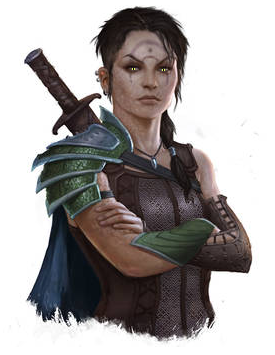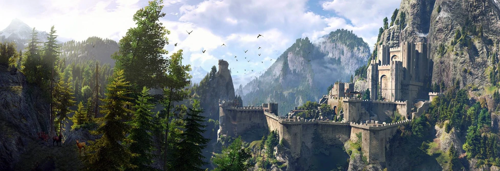003 The Reclaiming of Wysomir's Medallion
Synopsis:
Character Series: no character series
Group Series: Second Chronicles of Caer Norren, 2
Genre: Fantasy
Author: Adriana Pausenwein
Canada is a country in . Its extend from the to the and northward into the , covering 9.98 million square kilometres (3.85 million square miles), making it the world’s . Its southern and western , stretching 8,891 kilometres (5,525 mi), is the world’s longest bi-national land border. Canada’s capital is , and its three are , , and .
have continuously inhabited what is now Canada for thousands of years. Beginning in the 16th century, and expeditions explored and later settled along the Atlantic coast. As a consequence of , France of in 1763. In 1867, with the union of three colonies through , Canada was formed as a of four provinces. This began an and a process of increasing autonomy from the . This widening autonomy was highlighted by the and culminated in the , which severed the vestiges of legal dependence on the .
Canada is a and a in the . The country’s is the —who holds office by virtue of their ability to of the elected —and is appointed by the , representing the , who serves as . The country is a and is at the federal level. It in international measurements of government transparency, civil liberties, quality of life, , and education. It is one of the world’s most ethnically diverse and nations, the product of from many other countries. Canada’s has had a significant impact on and .
A highly , Canada has the and the ranking in the . Its advanced economy is the , relying chiefly upon its abundant natural resources and well-developed international trade networks. Canada is part of several major international and intergovernmental institutions or groupings including the , , the , the , the , the (OECD), the (WTO), the , the , the , the forum, and the .
1
Etymology
Main article:
While a variety of theories have been postulated for the etymological origins of Canada, the name is now accepted as coming from the word kanata, meaning "village" or "settlement". In 1535, Indigenous inhabitants of the present-day region used the word to direct French explorer to the village of . Cartier later used the word Canada to refer not only to that particular village but to the entire area subject to (the chief at Stadacona); by 1545, European books and maps had begun referring to this small region along the as Canada.
From the 16th to the early 18th century, "" referred to the part of that lay along the Saint Lawrence River. In 1791, the area became two British colonies called and . These two colonies were collectively named until their union as the British in 1841.
Upon , Canada was adopted as the legal name for the new country at the , and the word was conferred as the country’s title. By the 1950s, the term Dominion of Canada was no longer used by the United Kingdom, which considered Canada a "Realm of the Commonwealth". The government of ended the practice of using Dominion in the statutes of Canada in 1951.
The , which brought the fully under Canadian control, referred only to Canada. Later that year, the name of the national holiday was changed from Dominion Day to . The term Dominion was used to distinguish the federal government from the provinces, though after the the term federal had replaced dominion.
History
Main article:
See also: and
Further information:
Indigenous peoples
at the time of European contact
include the , , and , the last being of who originated in the mid-17th century when First Nations people married European settlers and subsequently developed their own identity.
2
The are generally hypothesized to have migrated from by way of the and arrived at least 14,000 years ago. The archeological sites at and are two of the oldest sites of human habitation in Canada. The included permanent settlements, agriculture, complex societal hierarchies, and trading networks. Some of these cultures had collapsed by the time European explorers arrived in the late 15th and early 16th centuries and have only been discovered through archeological investigations.
The at the time of the first European settlements is estimated to have been between 200,000 and two million, with a figure of 500,000 accepted by Canada’s . As a consequence of European colonization, the Indigenous population declined by forty to eighty percent, and several First Nations, such as the , disappeared. The decline is attributed to several causes, including the , such as , , and to which they had no natural immunity, conflicts over the fur trade, conflicts with the colonial authorities and settlers, and the loss of Indigenous lands to settlers and the subsequent collapse of several nations’ self-sufficiency.
Although not without conflict, ’ early interactions with First Nations and Inuit populations were relatively peaceful. First Nations and Métis peoples played a critical part in the development of , particularly for their role in assisting European and in their explorations of the continent during the . began interactions , though the Inuit, in general, had more limited interaction with European settlers. However, from the late 18th century, European Canadians encouraged Indigenous peoples to assimilate into their own culture. These attempts reached a climax in the late 19th and early 20th centuries with and . A period of redress is underway, which started with the appointment of the by the in 2008.
3
European colonization
Map of territorial claims in by 1750, before the , which was part of the greater worldwide conflict known as the (1756 to 1763). Possessions of Britain (pink), (blue), and Spain (orange, California, Pacific Northwest, and Great Basin not indicated)
It is believed that the first European to explore the east coast of Canada was explorer . In approximately 1000 AD, the Norse built a small encampment that only lasted a few years at on the northern tip of . No further European exploration occurred until 1497, when Italian seafarer explored and claimed Canada’s in the name of King . In 1534, French explorer Jacques Cartier explored the where, on July 24, he planted a 10-metre (33 ft) cross bearing the words "Long Live the King of France" and took possession of the territory New France in the name of . The early 16th century saw European mariners with navigational techniques pioneered by the and establish seasonal whaling and fishing outposts along the Atlantic coast. In general, early settlements during the appear to have been due to a combination of the harsh climate, problems with navigating trade routes and competing outputs in Scandinavia.
In 1583, Sir , by the of Queen , founded , as the first North American . In 1600, the French established their first seasonal trading post at along the Saint Lawrence. French explorer arrived in 1603 and established the first permanent year-round European settlements at (in 1605) and Quebec City (in 1608). Among the of New France, extensively settled the Saint Lawrence River valley and settled the present-day , while fur traders and explored the , , and the to . The broke out in the mid-17th century over control of the North American fur trade.
4
The English established additional settlements in in 1610 along with settlements in the to the south. A series of erupted in colonial North America between 1689 and 1763; the later wars of the period constituted the North American theatre of the . Mainland came under British rule with the 1713 , and Canada and most of New France came under British rule in 1763 after the Seven Years’ War.
British North America
’s (1771) dramatizes ’s death during the at .
The established First Nation treaty rights, created the out of New France, and annexed to Nova Scotia. St. John’s Island (now ) became a separate colony in 1769. To avert conflict in Quebec, the British Parliament passed the 1774, expanding Quebec’s territory to the Great Lakes and . More importantly, the Quebec Act afforded Quebec special autonomy and rights of self-administration at a time when the Thirteen Colonies were increasingly agitating against British rule. It re-established the , , and there, staving off the growth of an independence movement in contrast to the Thirteen Colonies. The Proclamation and the Quebec Act in turn angered many residents of the Thirteen Colonies, further fuelling anti-British sentiment in the years prior to the .
After the successful American War of Independence, the recognized the independence of the newly formed and set the terms of peace, ceding territories south of the Great Lakes and east of the Mississippi River to the new country. The American war of independence also caused a large out-migration of , the settlers who had fought against American independence. Many moved to Canada, particularly Atlantic Canada, where their arrival changed the demographic distribution of the existing territories. was in turn split from Nova Scotia as part of a reorganization of Loyalist settlements in the Maritimes, which led to the incorporation of , as Canada’s first city. To accommodate the influx of English-speaking Loyalists in Central Canada, the divided the province of Canada into French-speaking Lower Canada (later ) and English-speaking Upper Canada (later ), granting each its own elected legislative assembly.

